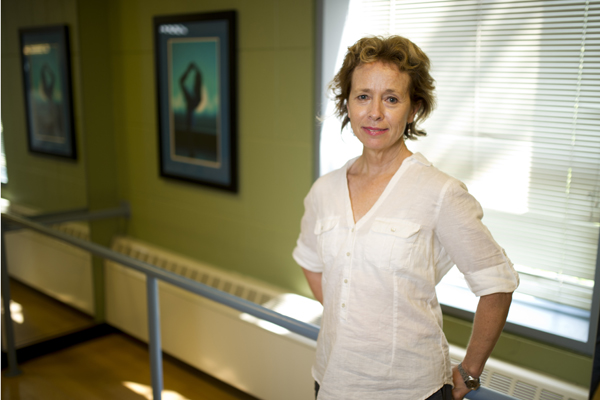The next steps for dance medicine

Prior to her physical therapy career, Shaw Bronner performed as a professional dancer on the national and international stage. The experience resulted in a robust understanding of the unique skills, physical demands, and potential injuries inherent in the profession. When she pivoted to her current career track, Bronner hoped her work would one day lead back to the dance studio.
Did it ever. Over the last 15 years, she’s led the Analysis of Dance and Movement Center—a research laboratory at Long Island University dedicated to examining human movement and dance—and served as director of physical therapy services at Alvin Ailey, the renowned modern dance company, junior company, and school. It was there where she created an in-house program that now services more than 5,000 dancers annually through services ranging from triage to screenings to backstage preventative care.
“I felt I could have a big impact on developing healthier habits for our dancers,” said Bronner, who implemented this novel comprehensive management program at Alvin Ailey. Over an eight-year period, this program resulted in a 34 percent decline in total injury incidence, two-thirds fewer workers compensation claims, and a 56 percent decrease in dancers’ time lost to injury in the company members. Dance, she explained, does not have the financial resources of professional sports, so the savings accomplished by the in-house program was substantial.
She joins Northeastern’s faculty this fall as an associate professor of physical therapy in the Bouvé College of Health Sciences, where she will move her ADAM Center laboratory and continue studying the biomechanics and epidemiology of dance movement, injury, and treatment. A key factor in this work, she said, is the ability to identify and describe healthy movements and those that lead to injury.
Over the years, her research has crossed disciplines and branched in exciting new directions. For a series of Nike-funded projects, she examined the biomechanics of breakdancers’ movements as they sported different types of footwear. Her group is currently analyzing the effect of video game technology on motor learning and neural plasticity. In particular, the work is exploring whether Parkinson’s disease patients could use the game “Dance Dance Revolution” as a training tool to help prevent them from falling. The first step is studying younger, healthy adults.
Bronner’s fascination with brain research can be summed up with a single question, one which popped up frequently at Alvin Ailey: how is it that a dancer can go 10 years without performing a routine and then step into the studio and perform it flawlessly? Greater understanding of the correlation between movement and memory, she said, can be a boon for brain research and rehabilitation.
Still, Bronner acknowledged that dance medicine is years behind sports medicine. For example, much more is known about a baseball pitcher’s throwing mechanics than, say, the movements of a ballet or hip-hop dancer. She hopes her research can help close the gap.
“When I starting treating dancers, they thought of themselves as artists and not as athletes,” said Bronner, who received her doctorate of philosophy in health sciences from the University of Medicine and Dentistry of New Jersey. “We’ve come leaps and bounds in recent years, but there is much work yet ahead.”





